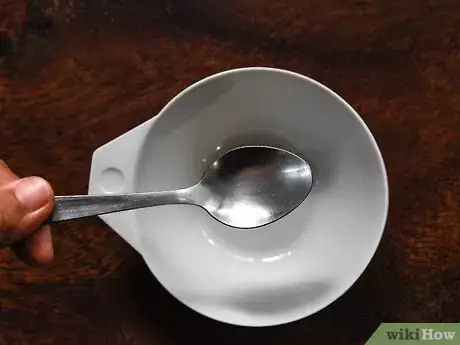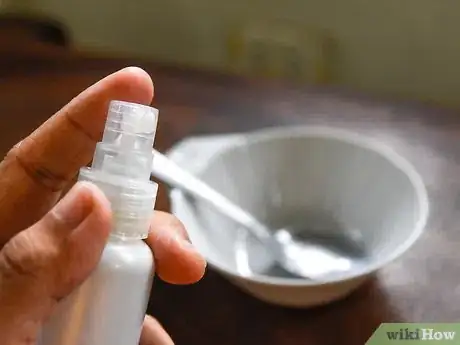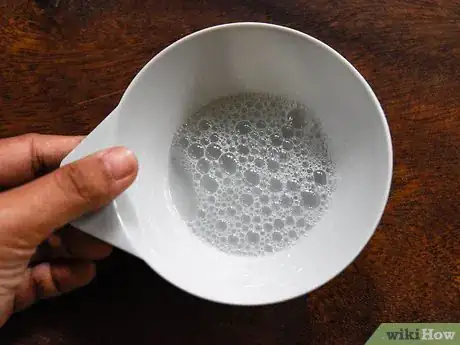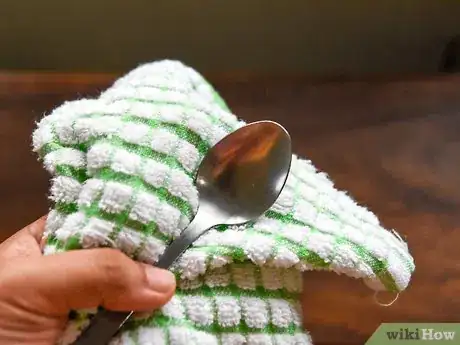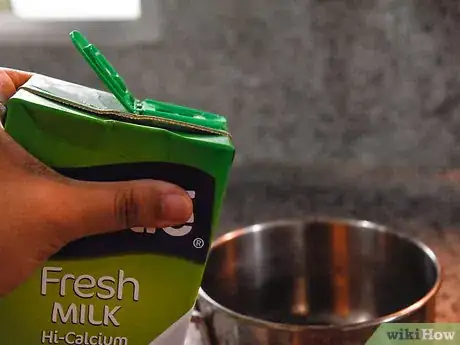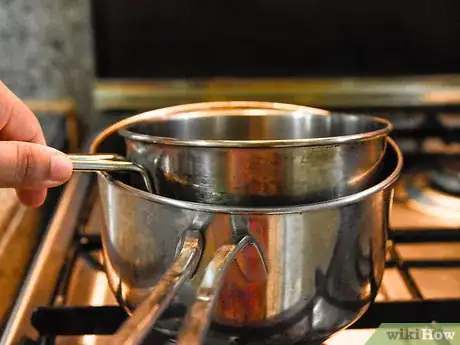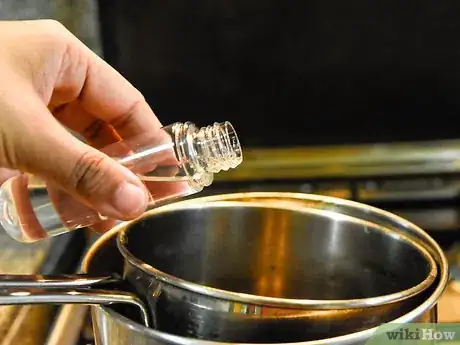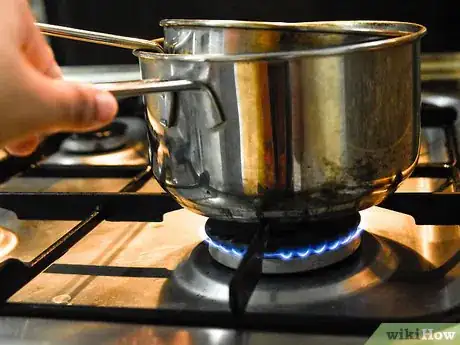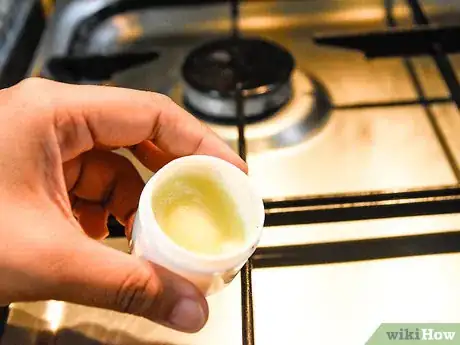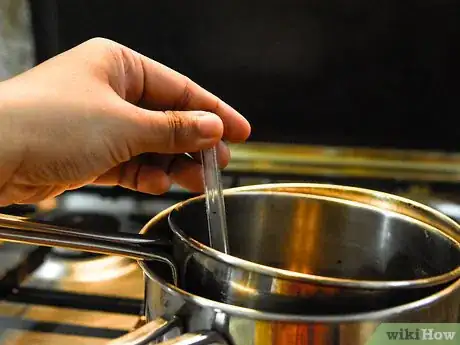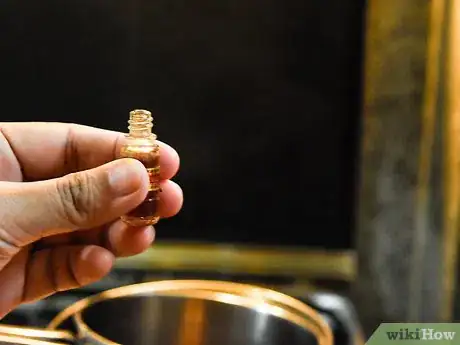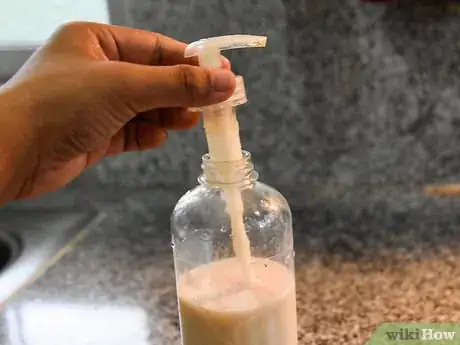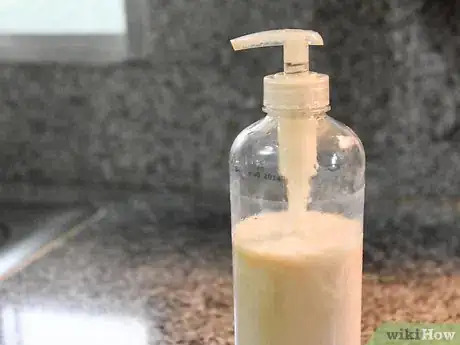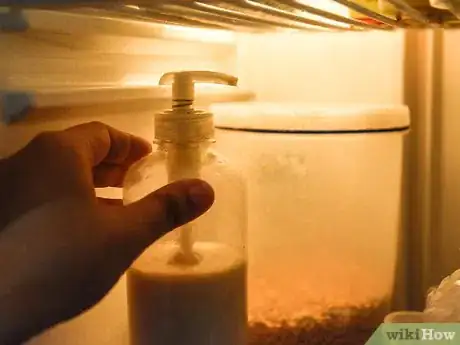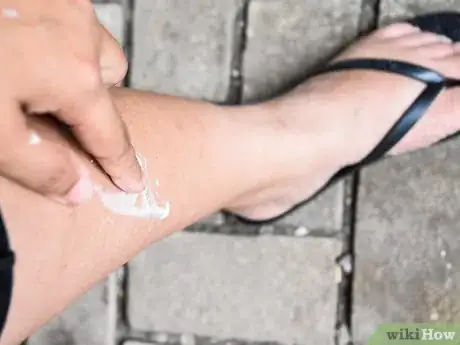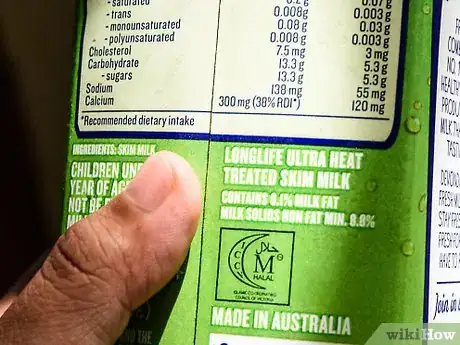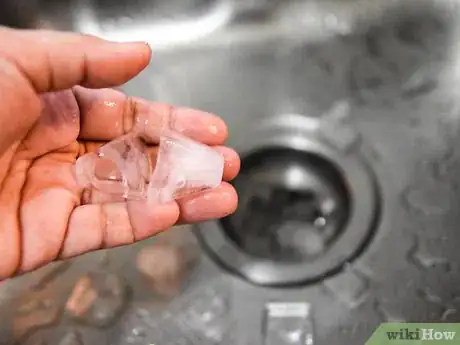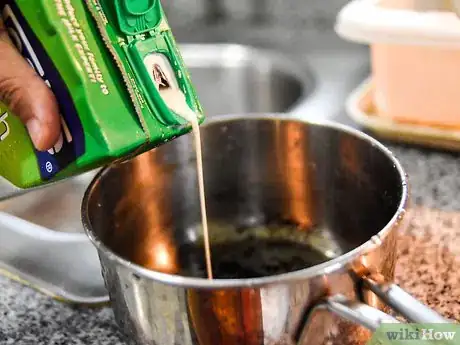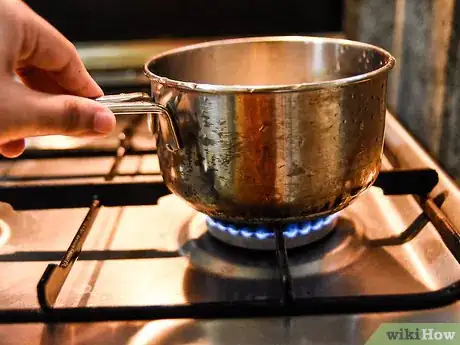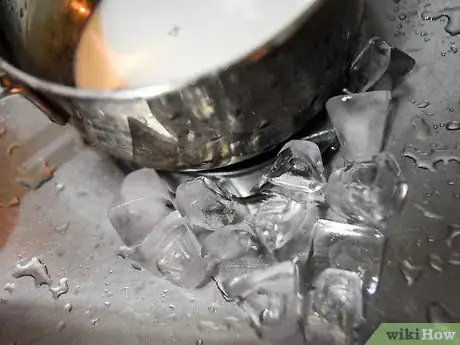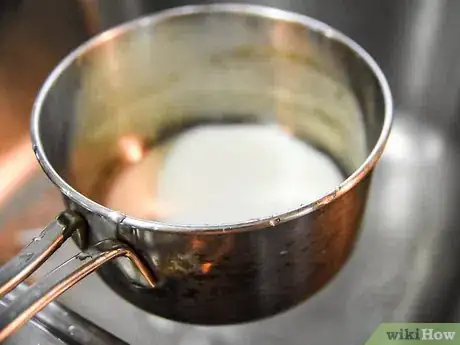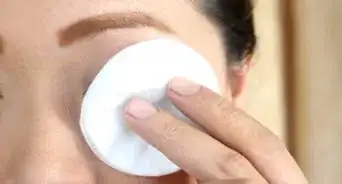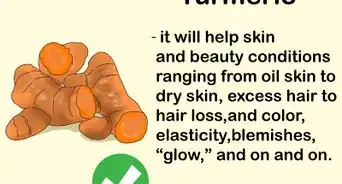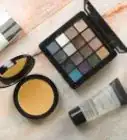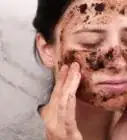wikiHow is a “wiki,” similar to Wikipedia, which means that many of our articles are co-written by multiple authors. To create this article, 18 people, some anonymous, worked to edit and improve it over time.
wikiHow marks an article as reader-approved once it receives enough positive feedback. In this case, 96% of readers who voted found the article helpful, earning it our reader-approved status.
This article has been viewed 131,928 times.
Learn more...
Homemade lotions are fun and easy to make. They are a healthy skin care alternative especially for those with sensitive skin. Goat's milk is a great moisturizer for skin. This article will show you how to make a lotion using goat's milk.
Ingredients
- 10.5 ounces (310.5 milliliters) distilled water
- 10.5 ounces (310.5 milliliters) pasteurized goat's milk
- 1.2 ounces (34.02 grams) emulsifying wax
- 2.7 ounces (79.85 milliliters) oils of your choice
- 1.2 ounces (34.02 grams) shea butter
- 0.3 – 0.4 ounce (8.51 – 11.34 grams) preservative (highly recommended)
- 1 ounce (28.35 grams) stearic acid (optional)
- 0.2 ounce (5.92 milliliters) fragrance or essential oil (optional)
Steps
Sanitizing the Equipment
-
1Know the importance of sanitizing your equipment. If you don't keep all your pots, bowls, spoons, and containers clean, you might introduce bacteria into your lotion. This can lead to rashes and infections. Everything you use must be kept clean and dry. Rinsing with tap water is not enough, as tap water often contains bacteria that might contaminate your equipment and lotion.
-
2Sanitize all pots, bowls, and mixing tools that you will be using. Once you are done sanitizing your equipment, be sure to dry everything with clean paper towels. You can sanitize your equipment in two ways:
- Spray your equipment down with rubbing alcohol. Then, wipe everything dry with clean paper towels.
- Soak your equipment in a solution of bleach and water. Use 1 ounce (29.6 milliliters) bleach for every gallon (3.8 liters) of water.
Advertisement -
3Sterilize the stick/handheld blender. Fill a bowl with water and a few pumps of dish soap. Add a splash of bleach. Beat the water with the blender for a few minutes. Stop the blender and rinse it out. Dry it off with some clean paper towels and pour out the soapy bleach water.
-
4Make sure that all of your equipment is dry. Any trace of water, especially tap water, gives bacteria a chance to develop and breed.
Making the Lotion
-
1Pour the distilled water and goat's milk into a pot and heat them to 80 to 100°F (26.7 – 37.8°C). Set the pot on the stove and keep an eye on it at all times. Be sure to stir it from time to time so that the milk does not scorch. Use your thermometer to check the temperature.
- The goat's milk must be pasteurized. If your bottle says "raw" or "non-pasteurized," you will need to pasteurize it. Click here to learn how to do this.
-
2Assemble a double boiler. Fill the bottom pot with 1 to 2 inches (2.54 to 5.08 centimeters) of water. Place the larger pot on top and move everything to the stove. If you do not have a double boiler, you can make your own by filling a large pot with 1 to 2 inches (2.54 to 5.08 centimeters) of water, and placing another pot or glass bowl on top of it. The bottom of the upper pot or bowl should not be touching the water.
-
3Add the oils and butters to the upper pot of the double boiler. Argan, avocado, coconut, jojoba, or sweet almond oil are all great options. You can use just one oil, or a combination, so long as you end up with 2.7 ounces (79.85 milliliters). For example, you can use 1.7 ounce (50.28) sweet almond oil and 1 ounce (29.57 milliliters) avocado oil.
- You can also use avocado butter or cocoa butter instead of shea butter.
-
4Heat the oils and butters over low to medium heat until they melt. This will make it easier to mix the rest of the ingredients into them. Be sure to stir the oils and butters from time to time so that they melt evenly.
-
5Add the stearic acid and emulsifying wax to the oils and stir with a spoon or spatula until melted. Stearic acid is used by soap makers to help thicken lotions. If you want a thicker lotion, add the stearic acid.
- You can purchase both ingredients online at a soap making supply shop.
-
6Add the water and goat's milk solution to the wax, butter, oil mixture and blend together with a stick/handheld blender. You will need to blend for about two to five minutes.[1]
-
7Test the temperature of the lotion before adding any preservatives. Each preservative has a different temperature requirement. Make sure that the temperature of the lotion falls within the recommended parameters of the preservative.
-
8Add the preservative and fragrance or essential oils. Preservatives are not absolutely necessary, but they will make your lotion last longer. You will also be able to keep your lotion on the shelf. If you do not add preservatives, you will need to store your lotion in the fridge and use it within two weeks.
- The most common preservatives used by soap and lotion markers are: Germall Powder, Optiphen, and Phenonip. You can purchase them online from soap making supply shops.
- You can find soap making fragrances in arts and crafts stores.
- You can find essential oils in all-natural food stores. You may also find them in arts and crafts stores.
- You can use any scent you want for your lotion. Lavender, rose, rosemary, or almond would work well in a goat's milk lotion.
-
9Blend one more time for about one minute.[2] At this time, you should see your lotion start to come together.
-
10Transfer the lotion into a bottle with a pump dispenser. You can use a spoon or spatula to do this. Try to use a glass bottle instead of plastic, as glass is less likely to harbor bacteria. Glass also does not leach out chemicals like plastic does.
- Consider adding a pretty label. You can draw your own label on a piece of pretty paper or print one out. Attach the label to the front of the jar with a wide piece of clear packaging tape. You can also decoupage it on using glossy Mod Podge.
Storing and Using the Lotion
-
1Keep the lotion in a pump dispenser instead of in a jar. This will lessen the chances of you touching the lotion that is still inside the bottle. If you use a jar, you will be constantly touching the lotion inside. This will increase the chances of bacteria getting inside the jar and breeding. With a pump dispenser, you won't actually be touching the lotion while it is inside the container. This will lessen the chances of it becoming contaminated.
-
2Use the lotion within six weeks. The preservatives will extend the shelf life of the goat's milk, but only by a little bit. They will not be enough to make the lotion last forever.
-
3Store the lotion in the fridge and use it within two weeks if you did not add any preservatives. If you do not do this, the lotion will spoil and become dangerous to use.
-
4Use goat's milk lotion if you have dry skin, eczema, or other skin conditions. Goat's milk contains lactic acid. This helps get rid of dead skin cells that lead to dryness, flakiness, and other skin irritations.[3]
- The high fat content of goat's milk is also super moisturizing, making it perfect for those with dry skin.
-
5Use goat's milk lotion if you want to reduce the appearance of wrinkles and manage acne. Goat's milk has plenty of Vitamin A, which is important to repairing damaged skin and keeping skin healthy. Some find that Goat's milk also gives psoriasis relief.[4]
Pasteurizing Goat's milk
-
1Know the importance of pasteurizing goat's milk. Not all goat's milk comes pasteurized. This means that it contains both good and bad bacteria. You need to pasteurize it, or the bad bacteria will breed and grow and cause your lotion to spoil.
- If the milk carton says that the milk has been pasteurized, you won't need to pasteurize it.
-
2Fill a sink with iced water. Add enough cold water into your sink so that the pot you will be using to pasteurize your milk will not be completely submerged. The water level should not go past more than two-thirds past the side of the pot. Add a lot of ice into the water; you need the water to be very cold. You will be using this for the ice bath later on.
-
3Pour the milk into pot. Make sure that you have a thermometer on hand and ready. The next few steps will go by very quickly.
-
4Heat the milk to 160°F (71.2°C) for thirty seconds. Be sure to stir it often so that it heats evenly and does not scorch.
-
5Place the pot into the ice bath and allow the milk to cool down to 39°F (3.9°C). Do not allow the water to enter the pot. You are simply using the ice water to cool down the milk.
-
6Take the pot out of the ice water and use the pasteurized milk. Once the milk has cooled down, take the pot out of the water and set it aside. Drain the ice water from the sink. Your milk is now bacteria free and safe to use in lotion.
Community Q&A
-
QuestionCan I use emu oil?
 Community AnswerEmu oil is animal/bird fat, just like any other. It's expensive and no better than any other form of "fat." Sesame oil, almond oil, and even olive oil are better for the skin. If you want to use bird fat, cook a turkey, skim the fat, render it down, and make soap -- it works great!
Community AnswerEmu oil is animal/bird fat, just like any other. It's expensive and no better than any other form of "fat." Sesame oil, almond oil, and even olive oil are better for the skin. If you want to use bird fat, cook a turkey, skim the fat, render it down, and make soap -- it works great! -
QuestionCan I use coconut powder for my lotion?
 Community AnswerYes, but not in large quantities. Make sure you mix the coconut power and lotion well.
Community AnswerYes, but not in large quantities. Make sure you mix the coconut power and lotion well. -
QuestionWhen I use a stick blender to blend my milk and oils together I get a lot of foam how long should I wait to bottle the lotion to keep it from separating?
 Community AnswerLet it sit until all the bubbles are out then slowly stir it and mix with a spoon/fork/spatula to make sure all air bubbles are out.
Community AnswerLet it sit until all the bubbles are out then slowly stir it and mix with a spoon/fork/spatula to make sure all air bubbles are out.
Warnings
- If you choose not to add preservatives to your lotion, you must store it in the fridge and use it within two weeks.⧼thumbs_response⧽
- If the lotion starts to grow mold, changes color, or smell sour, throw it away. Do not continue using it.⧼thumbs_response⧽
- Do not use wood or plastic mixing bowls, spoons, or spatulas. They gather the most bacteria and can contaminate your lotion.⧼thumbs_response⧽
- Do not use tap water or spring water for your lotion. Use distilled water only.⧼thumbs_response⧽
Things You'll Need
Ingredients for Goat's Milk Lotion
- 10.5 ounces (310.5 milliliters) distilled water
- 10.5 ounces (310.5 milliliters) pasteurized goat's milk
- 1.2 ounces (34.02 grams) emulsifying wax
- 2.7 ounces (79.85 milliliters) oils of your choice
- 1.2 ounces (34.02 grams) shea butter
- 0.3 – 0.4 ounce (8.51 – 11.34 grams) preservative (highly recommended)
- 1 ounce (28.35 grams) stearic acid (optional)
- 0.2 ounce (5.92 milliliters) fragrance or essential oil (optional)
Equipment for Making Goat's Milk Lotion
- Stick/handheld blender
- Pot
- Thermometer
- Double boiler
- Mixing spoons or spatulas (metal, glass, or silicone)
- Glass or metal mixing bowls
- Glass pump dispenser
- Digital scale (recommended for accurate measurements)
Equipment for Pasteurizing Goat's Milk
- Raw or non-pasteurized goat's milk
- Pot or saucepan
- Sink
- Water
- Lots of ice
- Thermometer
References
- ↑ Colorado Springs Independent, How to Make Goat's milk Lotion
- ↑ Colorado Springs Independent, How to Make Goat's milk Lotion
- ↑ Goat's milk Stuff, Goat's milk Soap Benefits
- ↑ Goat's milk Stuff, Goat's milk Soap Benefits
- ↑ Hart Nana, Goat's milk Lotion Recipe
- ↑ Hart Nana, Goat's milk Lotion Recipe
- Soap Queen, Make Lotion from Scratch on Soap Queen TV
About This Article
To make goat milk lotion, heat distilled water and pasteurized goat's milk in a pot until the mixture reaches 80-100°F. Next, add 1-2 inches of water to the bottom pot of a double boiler and pour 2.7 ounces of moisturizing oils like Argan, avocado, and coconut to the top pot. Then, heat the oils over low heat until they melt, combine the milk mixture with the oil mixture, and blend them together for 2-5 minutes. Finally, add a preservative and essential oils and blend for 1 minute before transferring the finished lotion to a bottle. For tips on storing your finished lotion, read on!
